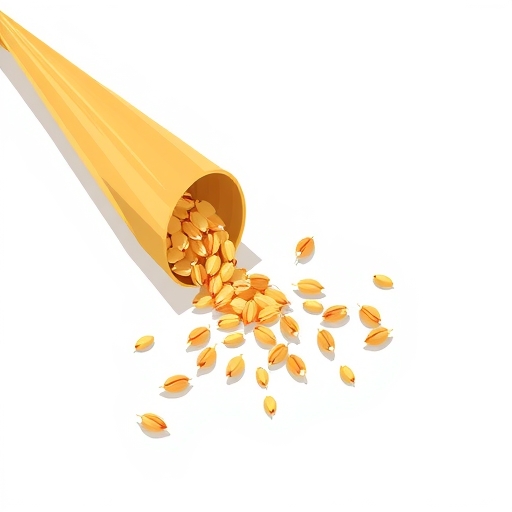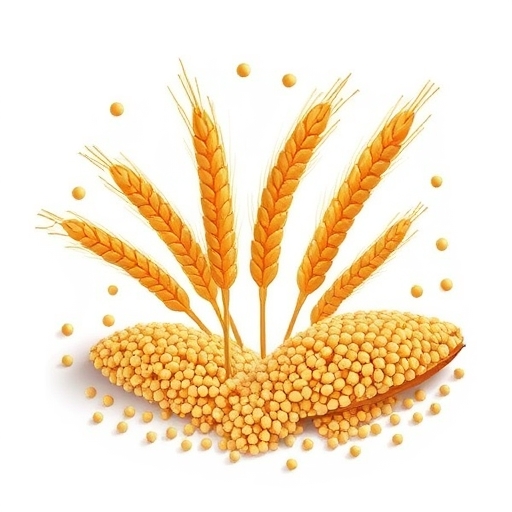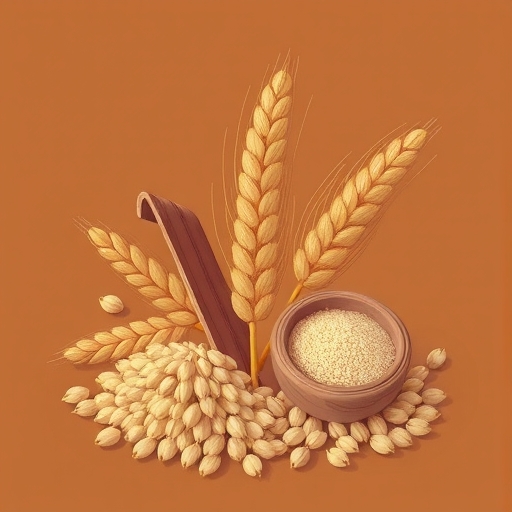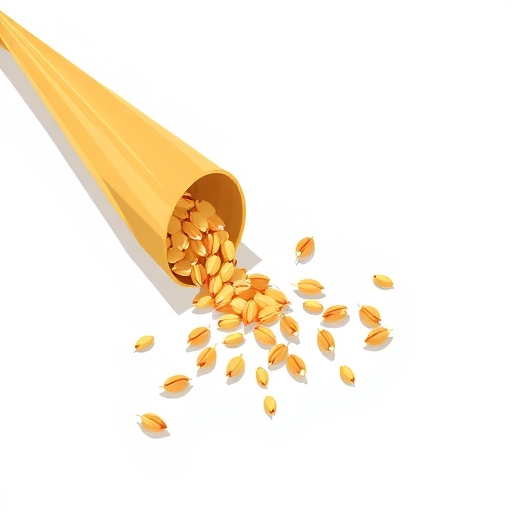Navigating the Grain Markets: A Comprehensive Guide to Wheat ETFs
Are you looking for ways to diversify your investment portfolio and potentially protect your wealth against economic shifts like inflation? In today’s dynamic global financial landscape, investors are increasingly exploring commodity markets. Exchange-Traded Funds (ETFs) offer a versatile and accessible gateway to these markets, including vital agricultural commodities like wheat. This article will help you understand what wheat ETFs are, how they work, the compelling benefits they offer, and the critical factors that drive their performance. We will also explore the broader agricultural commodity market and important regulatory considerations, ensuring you have a clear picture before considering such an investment.
Investors are increasingly turning to commodity ETFs for several strategic reasons, including:
- Portfolio diversification, offering exposure to assets that may not move in sync with traditional stocks and bonds.
- Potential inflation hedging capabilities, as commodity prices often rise during periods of increasing inflation.
- Ease of access to markets that were once difficult for individual investors to enter, such as futures markets.
Understanding Wheat ETFs: Structure, Types, and Market Access
What exactly is a Wheat ETF? Simply put, it is an Exchange-Traded Fund that aims to track the price of wheat. These investment vehicles provide you with indirect exposure to the wheat market without requiring you to physically buy and store bushels of grain or engage in complex direct futures trading.
Most Wheat ETFs primarily invest in wheat futures contracts. These are agreements to buy or sell a specific amount of wheat at a predetermined price on a future date. These contracts are traded on major commodities exchanges, such as the Chicago Board of Trade (CBOT). When you invest in a Wheat ETF, the fund manager handles the buying and selling of these futures contracts on your behalf. This mechanism allows you to participate in the potential price movements of wheat. 
It’s important to know that not all agricultural funds are the same. We can broadly categorize them into two types:
- Wheat Futures ETFs: These funds offer direct and concentrated exposure to wheat prices. The Teucrium Wheat Fund (WEAT) is a prime example, focusing specifically on wheat futures contracts.
- Agriculture ETFs with Wheat Exposure: These are broader funds that hold a basket of various agricultural commodities, which may include wheat, corn, soybeans, and sugar. The Teucrium Agricultural Fund (TAGS) or the Invesco DB Agriculture Fund (DBA) are examples. While they provide diversification across the agricultural sector, their performance might be diluted by the movements of other commodities within the fund.
To further clarify the distinction between these investment vehicles, consider the following comparison:
| Feature | Wheat Futures ETFs | Agriculture ETFs with Wheat Exposure |
|---|---|---|
| Primary Focus | Solely wheat futures | Basket of various agricultural commodities (including wheat) |
| Exposure Type | Concentrated, direct | Diversified across sector |
| Examples | Teucrium Wheat Fund (WEAT) | Teucrium Agricultural Fund (TAGS), Invesco DB Agriculture Fund (DBA) |
| Volatility | Potentially higher, direct correlation to wheat price | Potentially lower, diluted by other commodities |
| Diversification | Specific commodity only | Broader sector diversification |
One of the key advantages of Commodity ETFs, including those focused on wheat, is their accessibility. Unlike direct futures contracts which can involve significant margin deposits and specialized trading accounts, ETFs are easily bought and sold on major stock exchanges, like the NYSE Arca, just like regular stocks. This makes them a much simpler and more cost-effective option for many retail investors to gain exposure to the dynamic commodity markets.
Strategic Advantages: Diversification, Inflation Hedging, and Accessibility
Incorporating Wheat ETFs or other Commodity ETFs into your investment strategy can offer several compelling benefits. Let’s explore why these assets are gaining attention from investors seeking to build a robust and resilient portfolio.
First and foremost, Commodity ETFs can play a vital role in diversification. Traditional financial markets, such as stocks and bonds, often move in tandem. However, commodity prices, particularly those of agricultural goods, can often behave independently. For example, during times of economic uncertainty or market downturns that affect stocks, agricultural commodities might hold their value or even increase due to their fundamental role in daily life. By adding assets that don’t always move with your stocks and bonds, you can potentially reduce your overall portfolio risk. Think of it like this: if you have a basket of different fruits, and some go bad, others might still be perfectly fine, protecting your overall harvest.
Beyond diversification, Wheat ETFs and other commodities are widely regarded as an excellent inflation hedge. What does this mean? When inflation rises, the purchasing power of your money decreases. The Consumer Price Index (CPI), which measures inflation, increases, meaning your dollar buys less than it used to. Historically, commodity prices tend to increase during periods of rising inflation. Why? Because commodities are the raw materials for almost everything we consume. As the cost of producing goods goes up due to inflation, so too does the price of the underlying commodities. By holding assets whose values tend to rise with inflation, you can help protect your purchasing power and the real value of your investments.
Finally, as we touched on earlier, accessibility is a major advantage. For many individual investors, directly trading in the futures markets can be daunting due to high capital requirements, complex margin calls, and specialized knowledge. Wheat ETFs simplify this process immensely. They allow you to gain exposure to these markets through a familiar investment structure, with lower transaction costs and the ability to buy or sell shares throughout the trading day, offering significant liquidity. This means you can easily enter or exit your position when you need to, making them a practical choice for many.
Beyond the core benefits, these ETFs also allow investors to capitalize on global economic growth and population trends that consistently drive demand for essential foodstuffs. As global populations grow and emerging economies develop, the underlying demand for agricultural commodities like wheat is projected to increase over the long term, adding another dimension to their investment appeal.
In summary, the strategic benefits of integrating Wheat ETFs into a diversified investment portfolio include:
- Offers a distinct asset class for robust portfolio diversification.
- Serves as a historical hedge against inflationary pressures, preserving purchasing power.
- Provides accessible and liquid exposure to complex commodity markets for retail investors.
Key Drivers and Risks: Navigating Volatility in the Wheat Market
While Wheat ETFs offer attractive benefits, it’s crucial to understand the multifaceted factors that influence their performance and the inherent risks involved. The world of agricultural commodities is characterized by significant price volatility, meaning values can swing rapidly and unexpectedly.
Several key drivers can profoundly affect wheat prices and, consequently, the performance of Wheat ETFs:
- Weather Conditions: This is arguably the most significant factor. Droughts, floods, extreme temperatures, or unseasonable frosts in major wheat-producing regions (like the United States, Russia, or Ukraine) can severely impact wheat yields and overall global supply. A poor harvest due to adverse weather can lead to sharp price increases.
- Global Supply and Demand: The fundamental economic principle is always at play. Disruptions to supply chains, changes in global consumption patterns, or shifts in demand from major importing nations (like China or India) can cause significant price movements. For instance, if a major consumer nation increases its demand, prices will likely rise.
- Geopolitical Events: Political instability, trade disputes, or conflicts in major agricultural regions can have a dramatic effect. The recent conflict in Ukraine, a significant global wheat exporter, caused substantial spikes in wheat prices due to fears of supply disruption. Such geopolitical events introduce considerable market uncertainty.
- Government Policies: Decisions made by governments can directly influence the market. Subsidies to farmers, import tariffs, export restrictions, or new trade agreements can impact production levels, trade flows, and ultimately, prices. For example, an export ban by a major producer could send prices soaring.
- Currency Exchange Rates: The value of major currencies, particularly the U.S. dollar, can influence global commodity prices. Since many commodities are priced in U.S. dollars, a stronger dollar makes wheat more expensive for international buyers using other currencies, potentially reducing demand and putting downward pressure on prices.
- Inflation and Interest Rates: While rising inflation generally benefits commodities, higher interest rates can sometimes reduce demand for commodities. Higher rates can increase the cost of holding inventory and make other investments more attractive, potentially diverting funds away from commodities.
Understanding these drivers is crucial for investors. Here’s a brief overview of how these factors impact wheat prices:
| Driver | Impact on Wheat Prices | Example Scenarios |
|---|---|---|
| Weather | Major determinant of supply | Droughts or floods reduce yields, increasing prices. |
| Supply & Demand | Fundamental economic forces | Increased global consumption drives prices up. |
| Geopolitics | Disruptions to trade routes or production | Conflict in major exporting region causes price spikes. |
| Government Policies | Influences production, trade, and market access | Export bans or subsidies affect global supply. |
| Currency Rates | Affects international purchasing power | Stronger USD makes wheat more expensive for foreign buyers. |

Beyond these drivers, you should also be aware of specific risks associated with futures-based ETFs:
- Contango and Backwardation: These are terms describing the relationship between current (spot) prices and future (futures) prices. In contango, futures prices are higher than the current spot price, which can erode returns for an ETF that constantly “rolls” its expiring futures contracts into new, higher-priced ones. Conversely, in backwardation, futures prices are lower than the spot price, which can benefit the ETF. Understanding this concept is crucial for grasping how a futures-based fund performs over time, as it can significantly impact returns even if the spot price of the commodity moves favorably.
- Exposure to Other Commodities: If you invest in a broader Agriculture ETF, its performance can be diluted by the price movements of other assets within the fund. For example, if wheat prices are rising but corn or soybean prices are falling, the overall fund’s performance might be muted.
As you can see, the wheat market is a complex ecosystem. Understanding these interdependencies is key to navigating its inherent price volatility.
The Broader Commodity ETF Landscape and Regulatory Considerations
Beyond wheat, the world of agricultural commodities offers exposure to a range of other essential crops. Leading ETF issuers like Teucrium provide a suite of products designed to give investors targeted access to these markets. For instance, the Teucrium Corn Fund (CORN) focuses on corn futures, while the Teucrium Soybean Fund (SOYB) tracks soybeans. As mentioned earlier, the Teucrium Agricultural Fund (TAGS) offers diversified exposure across a basket of these agricultural staples. These funds allow investors to tailor their commodity exposure based on their outlook for specific crops.
Here is a table showcasing some common agricultural commodities and their associated ETFs from the Teucrium suite, illustrating the variety of targeted exposure available to investors:
| Commodity | Example ETF (Ticker) | Primary Focus |
|---|---|---|
| Wheat | Teucrium Wheat Fund (WEAT) | Tracks wheat futures contracts |
| Corn | Teucrium Corn Fund (CORN) | Tracks corn futures contracts |
| Soybeans | Teucrium Soybean Fund (SOYB) | Tracks soybean futures contracts |
| Sugar | Teucrium Sugar Fund (CANE) | Tracks sugar futures contracts |
| Diversified Ag | Teucrium Agricultural Fund (TAGS) | Basket of multiple agricultural commodities |

When considering Commodity ETFs, especially those that hold futures contracts, it’s vital to be aware of certain regulatory aspects that can impact your investment, particularly if you are an international investor. One such regulation is the IRS Section 1446(f) Rule, which pertains to Publicly Traded Partnerships (PTPs).
Under this rule, a 10% withholding tax on the gross proceeds from the sale or exchange of interests in a PTP is generally required for international investors. This can complicate things for non-U.S. residents. However, some Exchange-Traded Products (ETPs), including Teucrium’s agricultural funds (CORN, WEAT, SOYB, CANE, TAGS), have taken steps to ensure they are exempt from this rule. They achieve this by certifying that they are not engaged in a U.S. trade or business, thus providing a smoother investment experience for a broader range of investors. Always check the specific fund’s documentation for its tax treatment.
Another important consideration, particularly for some investors, is Sharia compliance. Islamic finance principles generally prohibit investments that involve excessive uncertainty or speculation (known as *gharar*), or interest (riba). For commodities, this means that physically-backed commodities, such as precious metals like gold (e.g., Wisdomtree Physical Gold – PHAU), are typically permissible because they involve direct ownership of a tangible asset. However, futures contracts and options-based contracts, which are the primary mechanisms for many Wheat ETFs, are generally considered impermissible due to the inherent uncertainty and speculative nature involved in their trading. Therefore, investors seeking Sharia-compliant options for commodity exposure might need to look for specific Islamic Commodity Funds that adhere to these principles, often through direct physical ownership models, though these may come with higher fees.
Finally, it’s worth noting that commodities, in general, can experience long-term price trends often referred to as “supercycles.” These extended periods of rising or falling prices can be driven by massive global shifts, such as the rapid industrialization of nations or significant changes in global supply and demand dynamics. The economic strength of nations and major geopolitical events, like the impact of sanctions on Russian energy imports, can also play a crucial role in triggering and sustaining these broad commodity price trends. Understanding these larger forces helps to contextualize the movements in individual commodities like wheat.
Before investing, it is always recommended to perform thorough due diligence. This includes reviewing the fund’s prospectus, understanding its expense ratios, and assessing its liquidity.
- Carefully review the fund’s prospectus to understand its investment strategy and underlying holdings.
- Evaluate the expense ratio and trading costs, as these can impact long-term returns.
- Assess the fund’s liquidity to ensure easy entry and exit from positions.
Conclusion
Wheat ETFs offer a unique and accessible pathway for investors to gain exposure to the dynamic agricultural commodity market. They provide potential benefits such as valuable portfolio diversification and acting as a strategic inflation hedge, helping to protect your purchasing power during periods of rising prices. However, it’s clear that these funds are subject to significant price volatility, driven by a complex interplay of environmental factors like weather conditions, economic forces like global supply and demand, and profound geopolitical events.
Before you consider adding Wheat ETFs to your portfolio, you must thoroughly assess your personal risk tolerance and understand the specific structural and regulatory nuances, including the impact of concepts like contango and the specific tax implications of certain funds. Just as a farmer understands the soil and seasons, a wise investor understands the market’s complexities. By focusing on education and knowledge sharing, we aim to equip you with the insights needed to make informed investment decisions that align with your financial goals. 
Disclaimer: This article is intended for informational and educational purposes only and does not constitute financial advice. Investing in commodities, including through ETFs, involves significant risks, including the potential loss of principal. Past performance is not indicative of future results. Always consult with a qualified financial professional before making any investment decisions.
Frequently Asked Questions (FAQ)
Q: What are the main benefits of investing in Wheat ETFs?
A: Wheat ETFs offer portfolio diversification, potential inflation hedging, and accessible exposure to the agricultural commodity market without requiring direct engagement in complex futures trading.
Q: What are the key factors that influence wheat prices?
A: Wheat prices are primarily influenced by weather conditions in major growing regions, global supply and demand dynamics, geopolitical events, government policies, and currency exchange rates.
Q: Are Wheat ETFs suitable for all investors?
A: While offering benefits, Wheat ETFs involve significant price volatility and specific risks like contango. They are generally more suitable for investors with a higher risk tolerance and a clear understanding of commodity market dynamics and associated risks.



No responses yet